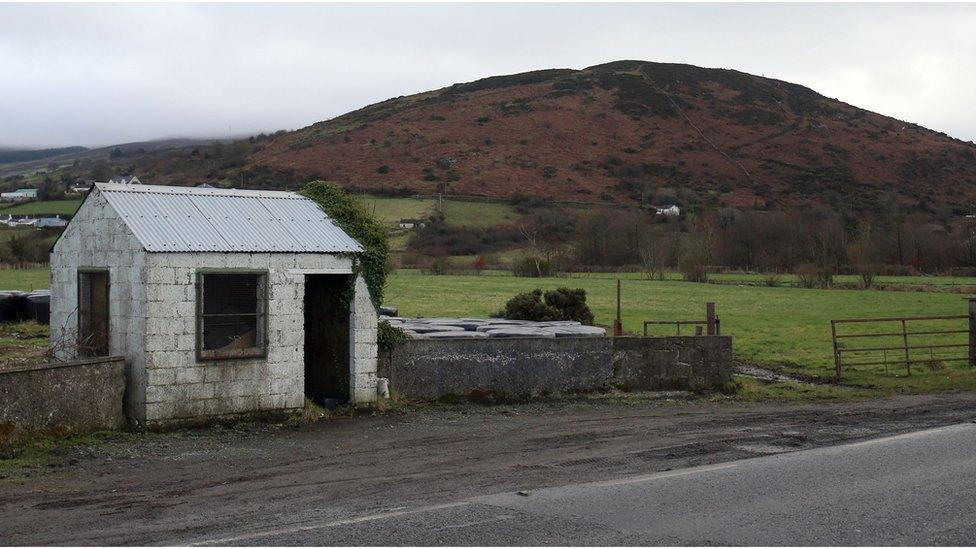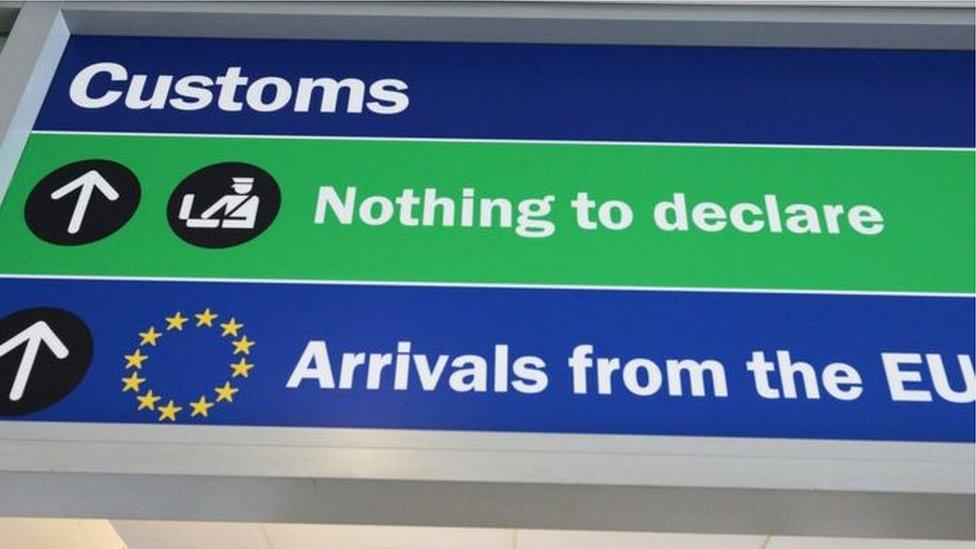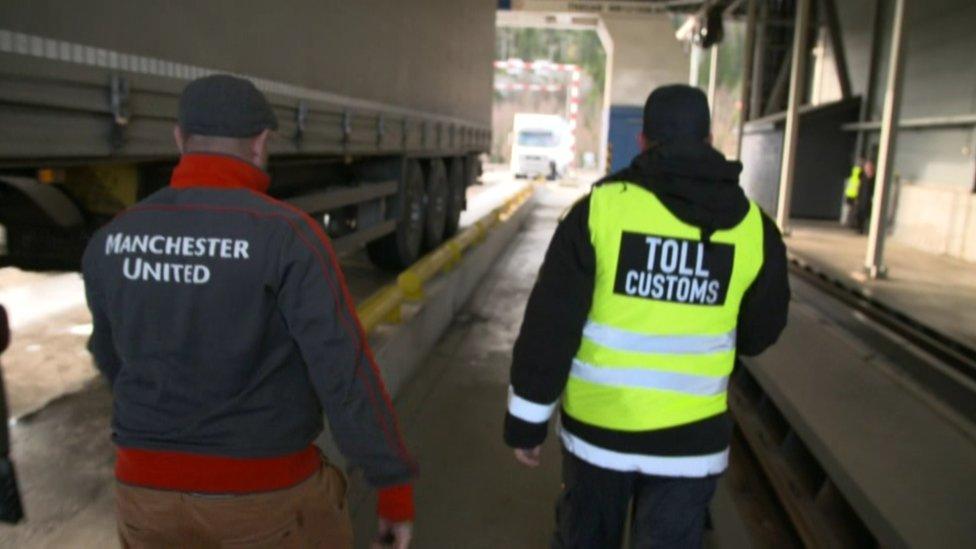Brexit: UK and EU seek alternative to hard Irish border
- Published

Concrete remnants of a previous hard border in south Armagh
Article 50 has not yet been triggered but already the UK's Brexit Secretary and the EU's chief negotiator have some common ground.
They agree there should be no return to a hard border in Ireland.
Hard border has come to mean one which has physical form, through checkpoints or customs posts.
When, as part of Brexit, the UK leaves the EU's customs union there will have to be some from of customs enforcement.
From 1923 until the creation of the EU Single Market in 1993, that enforcement involved customs posts at the border.
Brexit Secretary David Davis has said the British government has no intention of rebuilding those posts.
'It will cost us money'
"It's not going to be easy. It will cost us money," he told the House of Commons Exiting the EU Committee.
"It will cost us a lot of work on technology to maintain border control on goods but without having border posts, but that's what we intend to do."
That came as music to the ears of the Irish government.
Taoiseach (Irish Prime Minister) Enda Kenny said: "We have a political agreement between the government that I lead and the British government that there will be no return to a hard border, that is a border with customs posts."

After Brexit the Irish border becomes the EU frontier
But of, course, after Brexit the Irish border becomes an EU frontier and what happens there is an issue for the EU as whole, not just the Irish government.
That is where the the EU's chief negotiator, Michel Barnier, came in this week.
Customs union
He said he would be "particularly attentive...to the consequences of the UK's decision to leave the customs union, and to anything that may, in one way or another, weaken dialogue and peace."
In reply to a follow-up question he said: "I will do all I can to make sure we don't find ourselves back with a hard border."
So the main players all share the will to prevent a hard border but the caveats in their language suggest they have not yet found a way.

Customs checks remain a feature of the Sweden/Norway border
Much of the speculation has centred on a virtual border where all declarations are made electronically and freight movements are monitored by number plate recognition technology.
A risk management system would be used to decide who to pull in for spot checks at depots which are some distance from the border.
Sweden/Norway model
The Sweden/Norway border is suggested as a model.
However, there are still physical customs posts on that border so the Irish solution would need to go beyond what has been achieved there.
This will have to be resolved sooner rather than later, because Mr Barnier said it is one of three issues which needs to be settled before talks on a trade deal and the future UK/EU relationship can start.